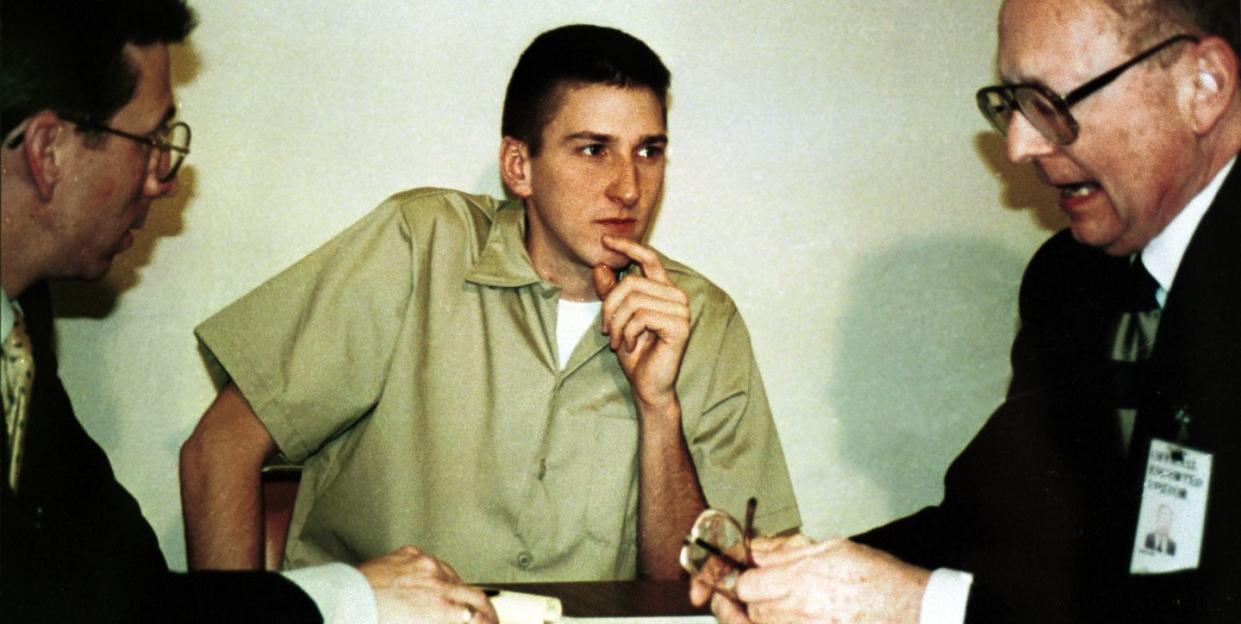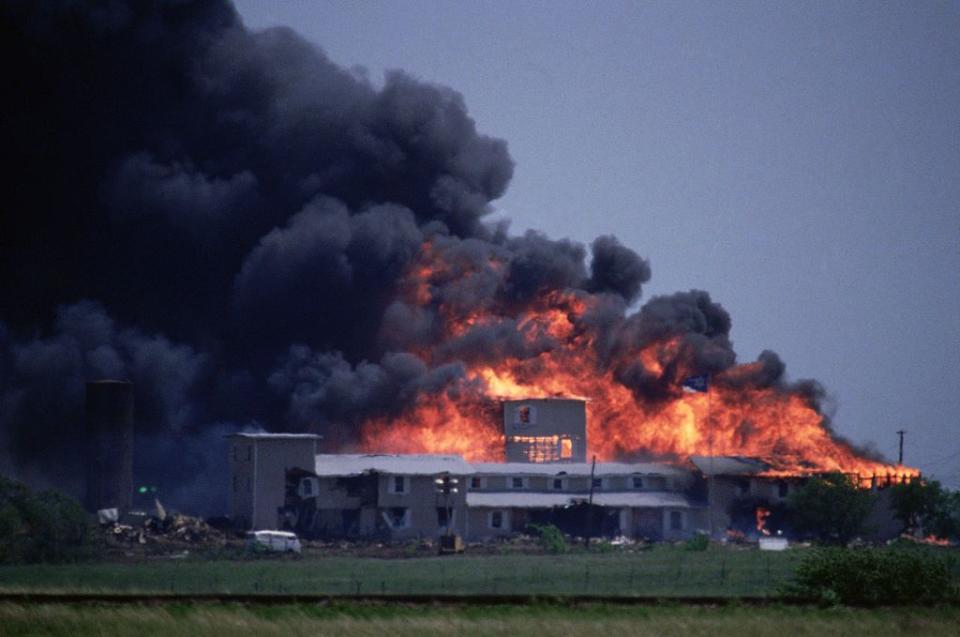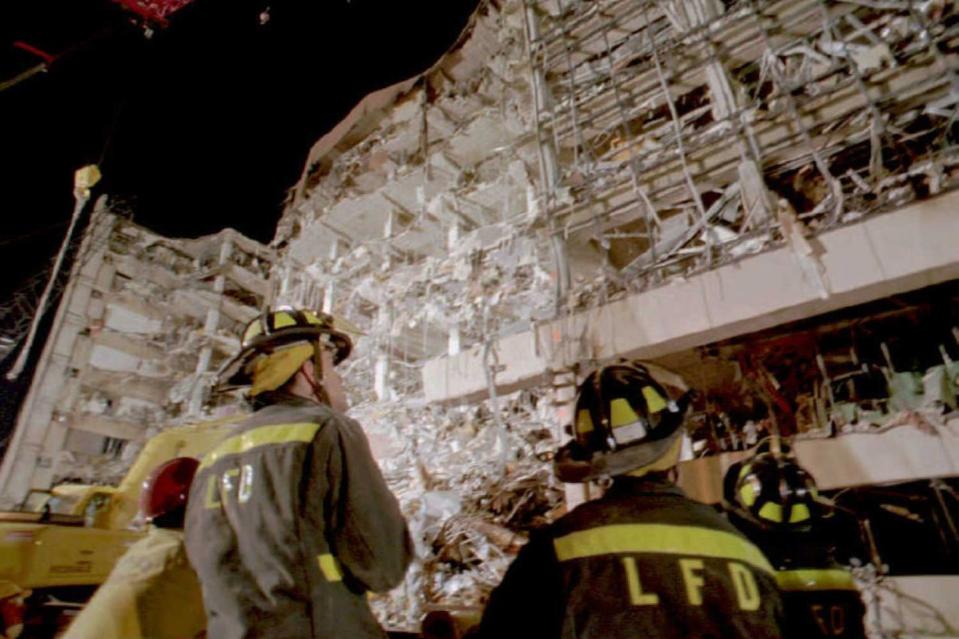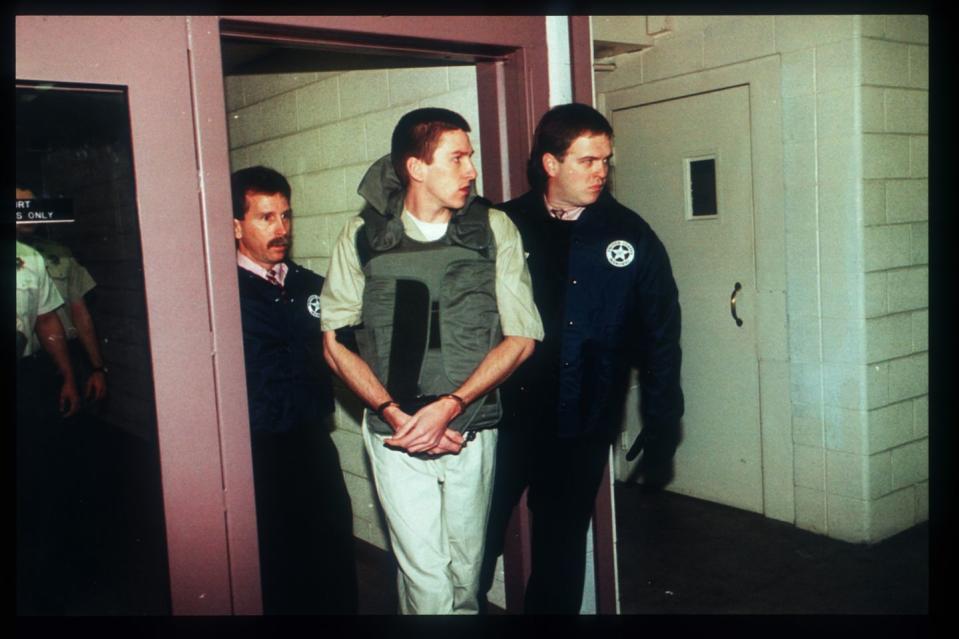How the Waco Siege Inspired Timothy McVeigh’s Oklahoma City Bombing Attack

"Hearst Magazines and Yahoo may earn commission or revenue on some items through these links."
During the infamous Waco siege in 1993, as members of the Branch Davidians religious sect were barricaded inside the Mount Carmel Center with federal law enforcement agents outside, curious onlookers routinely gathered at a hill three miles away. It was the closest civilians could get to the standoff, with the compound just barely visible in the distance.
On March 16, one of those onlookers sold pro-gun, anti-government bumper stickers slogans off the hood of his car. They included slogans such as “Fear the government that fears your guns,” “When guns are outlawed, I will become an outlaw,” and “A man with a gun is a citizen. A man without a gun is a subject.”
His name was Timothy McVeigh, and two years later, he and Terry Nichols would detonate explosives outside the Alfred P. Murrah Federal Building in Oklahoma City, killing 168 people and injuring hundreds more. His anger at the government over the Waco incident was one of McVeigh’s motivations in the attack. He wanted revenge.
“They wanted to retaliate against the government, based on Waco,” former Assistant U.S. Attorney Beth Wilkinson said. “In fact, the evidence shows that Mr. McVeigh was recruiting other individuals based on his hatred for the government and unhappiness with the Waco situation.”
This month marks the 30th anniversary of the Waco incident, a deadly shootout, siege, and fire that ended with the deaths of 82 Branch Davidians, including its leader David Koresh, and four federal agents. The siege is the subject of Waco: American Apocalypse, a three-part Netflix documentary series being released on March 22, as well as Waco: The Aftermath, a Showtime miniseries that will debut on April 16. The clash has been an enduring fascination of the American public, and in McVeigh’s case, not always for the better.
Infuriated by the Waco Siege

McVeigh had long espoused anti-government and white supremacist views and harbored anger over getting rejected by the Green Berets during his U.S. Army service. He also expressed anger over the government’s actions during the 1992 standoff in Ruby Ridge, Idaho, an 11-day confrontation between white separatist Randy Weaver and government agents at his cabin that left three people dead.
But McVeigh had been particularly infuriated when the Waco siege ended with the deadly fire that killed 76 Branch Davidians, including 25 children. He watched live news footage on April 19, 1993, with tears in his eyes, standing in the living room of a Michigan farmhouse owned by James Nichols, the brother of McVeigh’s friend and future Oklahoma City bombing co-conspirator Terry Nichols.
“We were all upset,” James Nichols said. “We were all in shock, saying, ‘Man, they’re burning it, and nobody’s coming out.’ We could see it was deliberate. We had been getting ready to farm. Then, Tim came running out, saying, ‘They’re burning Waco.’”
McVeigh’s best friend Michael Fortier later told the FBI that McVeigh felt the Branch Davidians were “murdered” by the federal government, according to The Oklahoman. McVeigh felt the incident wasn’t a religious rights issue, but rather was the government infringing on the group’s Second Amendment right to bear arms.
Revenge by Bombing

Waco stayed on McVeigh’s mind long after the incident was over. He revisited the Mount Carmel Center site in February 1994, taking photos of the ruins that were later recovered by FBI agents. Material about the Waco incident was also found in an envelope of political documents inside McVeigh’s getaway car after the bombings.
McVeigh listed April 19, the date of the Waco fire, as his birthday on a fake driver’s license that he used to rent the truck for the bombing, according to The Oklahoman. The bombings themselves took place on April 19, 1995, a date McVeigh chose deliberately.
“April 19 was the end date of Waco, and I don’t think there’s a larger statement on how strongly that made an impression on him other than two years later that’s the date of the bombings,” said Jody Lyneé Madeira, author of Killing McVeigh: The Death Penalty and the Myth of Closure.
When the bomb went off at Oklahoma City, McVeigh was two blocks away, reciting lyrics from the Bad Company song “Dirty for Dirty.” The reason, he later explained, was: “What the U.S. government did to Waco and Ruby Ridge was dirty, and I gave dirty back to them at Oklahoma City.”
Condemned by Branch Davidians

McVeigh, who was arrested the day of the bombing, was executed for his crimes on June 11, 2001. In media interviews before his execution, McVeigh repeatedly cited Waco as one of the reasons for the attack. “Their actions in Waco, Texas, were wrong,” he said of the FBI, calling the incident a “good example” of misdeeds committed by the federal government.
Regardless of McVeigh’s feelings about Waco, members of the Branch Davidians have strongly condemned his actions. One faction of the religious group even erected a headstone at the Mount Carmel Center site memorializing “all the men, women, and children who were victimized and brutally slaughtered” in the bombing.
“I don’t mourn him, and we would never support what happened in Oklahoma City,” Sheila Martin, whose husband and four children died at Waco, told The New York Times. “I wish Timothy McVeigh had come and talked to us. If he really had all that anger, I would have told him to redirect it in a different way. I would have asked him to come and help rebuild our church.”
Clive Doyle, who escaped the Waco compound fire but lost his 18-year-old daughter in the blaze, added: “Retaliation is not what we’re about. And Tim McVeigh is not any sort of champion from our point of view.”
How to Watch the Upcoming Waco Shows
Waco: American Apocalypse streams on Netflix starting March 22. Watch the trailer below:
Waco: The Aftermath, streams on Showtime starting April 16. Watch the trailer below:

